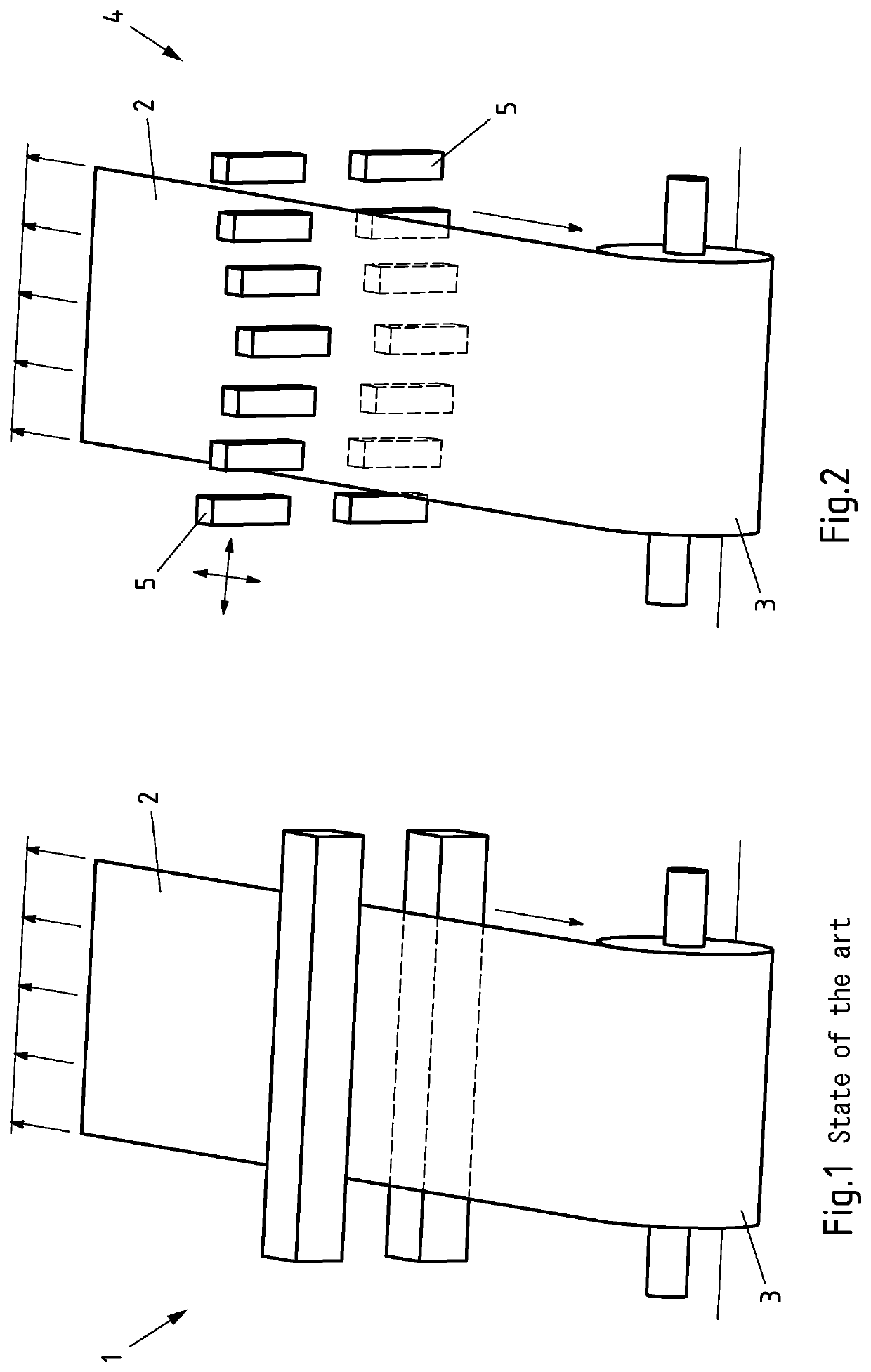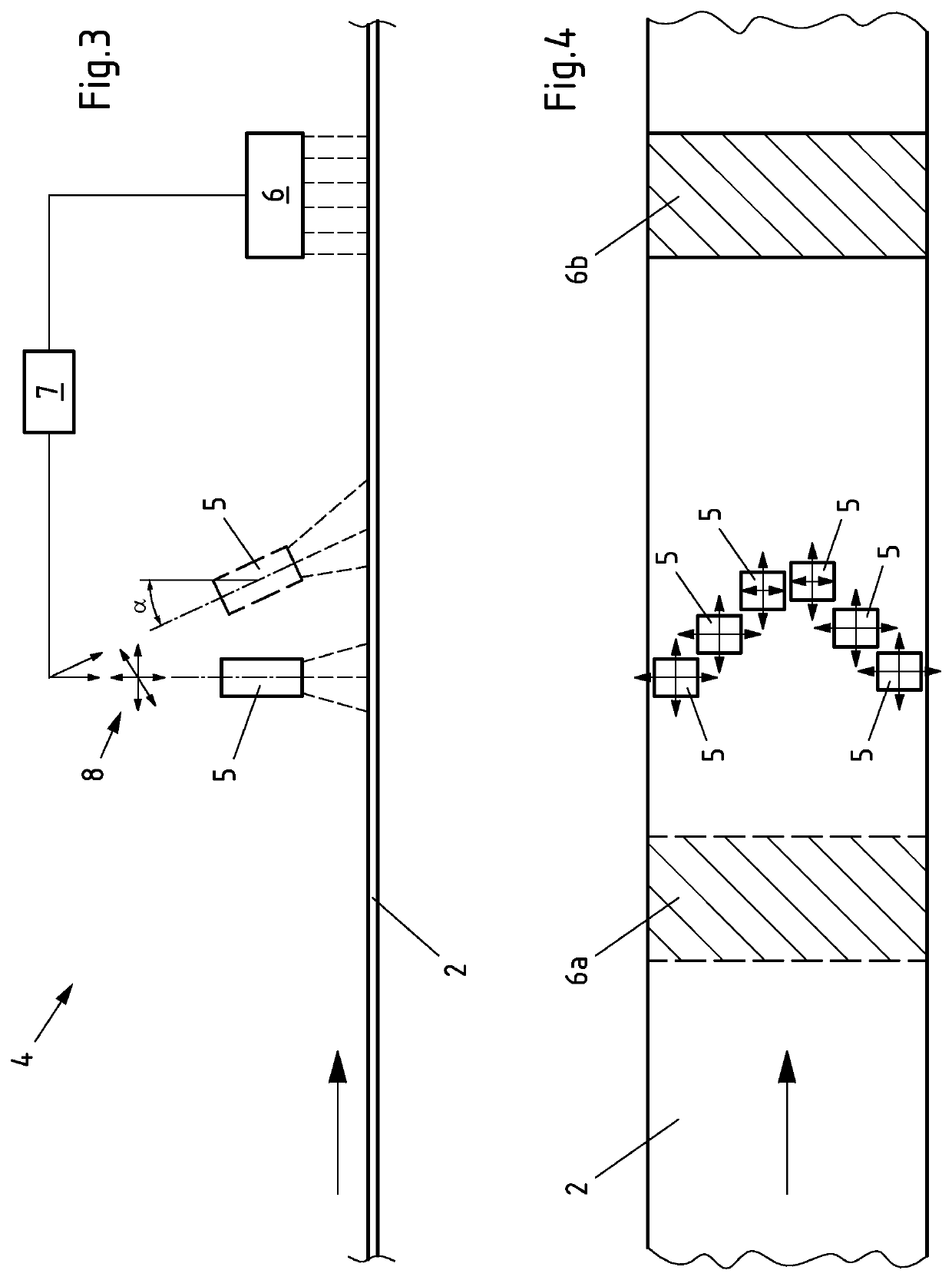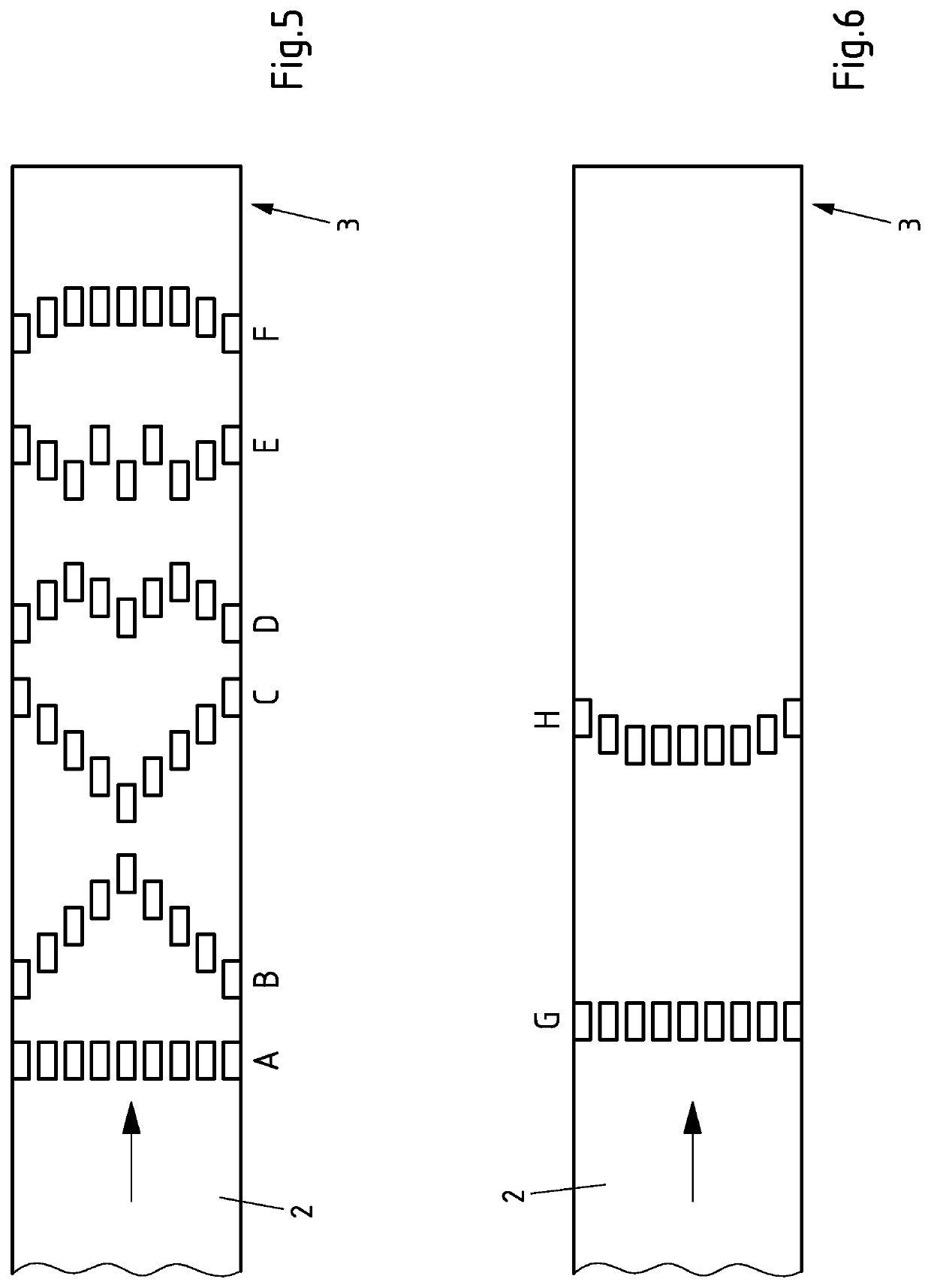Method and device for changing the temperature of metal strips in a flatness-adaptive manner
a technology of metal strips and temperature changes, which is applied in the direction of heat treatment devices, profile control devices, furnaces, etc., can solve the problems of flatness defects in finished products, inability to perform heat treatment of this type on wound-up coils, etc., and achieves low flatness changes, reduced stress in metal strips, and high precision
- Summary
- Abstract
- Description
- Claims
- Application Information
AI Technical Summary
Benefits of technology
Problems solved by technology
Method used
Image
Examples
Embodiment Construction
[0031]FIG. 1 is firstly a perspective view of a device for changing the temperature of a metal strip, such as is known from the prior art. The device for changing temperature 1 consists of what is known as a “temperature-control bar”, which comprises a plurality of temperature-control means arranged over the width and in part also over the depth of the bar, i.e. in the direction of travel of the strip. As can be seen in FIG. 1, the device known from the prior art can comprise a temperature-control bar both above and below the metal strip 2, which is preferably an aluminium or aluminium alloy strip. As a means for conveying the metal strip relative to the means for changing the temperature of the metal strip, a recoiler 3 is shown in FIG. 1.
[0032]Both when cooling the metal strip and when heating the metal strip, the means known from the prior art can be used to change the temperature of the metal strip to only a limited extent, for example by means of a distribution of the temperatu...
PUM
| Property | Measurement | Unit |
|---|---|---|
| temperatures | aaaaa | aaaaa |
| temperatures | aaaaa | aaaaa |
| temperatures | aaaaa | aaaaa |
Abstract
Description
Claims
Application Information
 Login to View More
Login to View More - R&D
- Intellectual Property
- Life Sciences
- Materials
- Tech Scout
- Unparalleled Data Quality
- Higher Quality Content
- 60% Fewer Hallucinations
Browse by: Latest US Patents, China's latest patents, Technical Efficacy Thesaurus, Application Domain, Technology Topic, Popular Technical Reports.
© 2025 PatSnap. All rights reserved.Legal|Privacy policy|Modern Slavery Act Transparency Statement|Sitemap|About US| Contact US: help@patsnap.com



